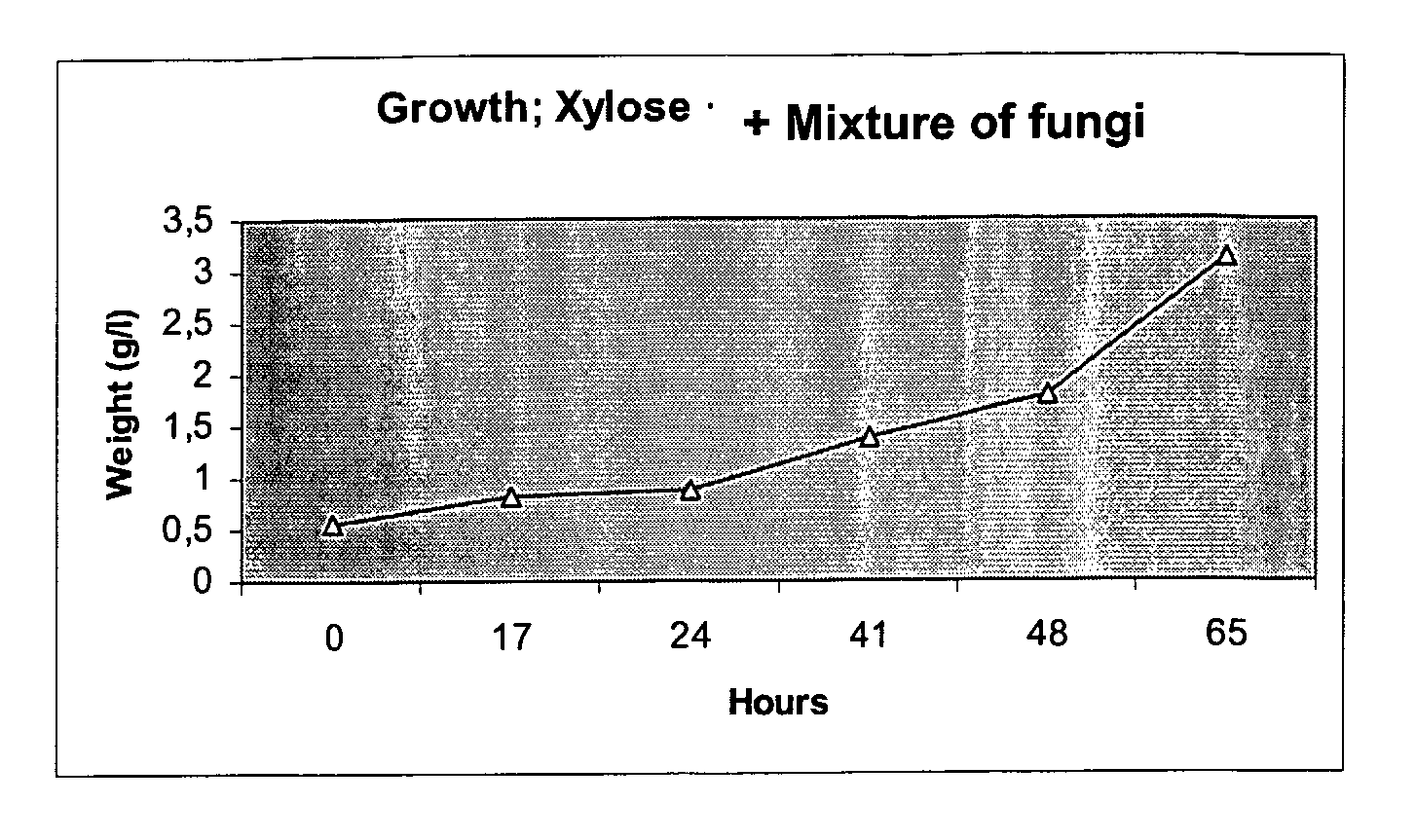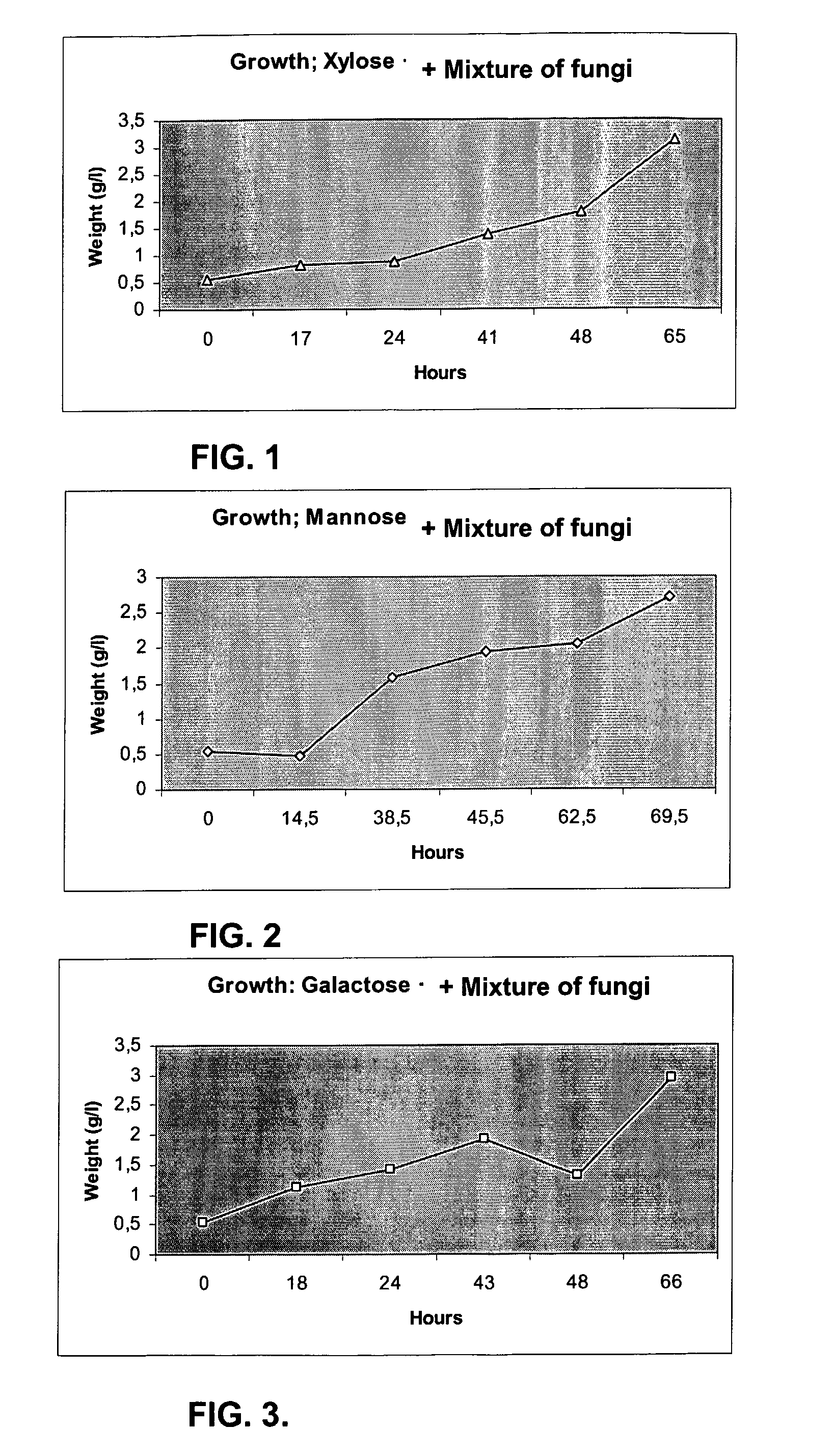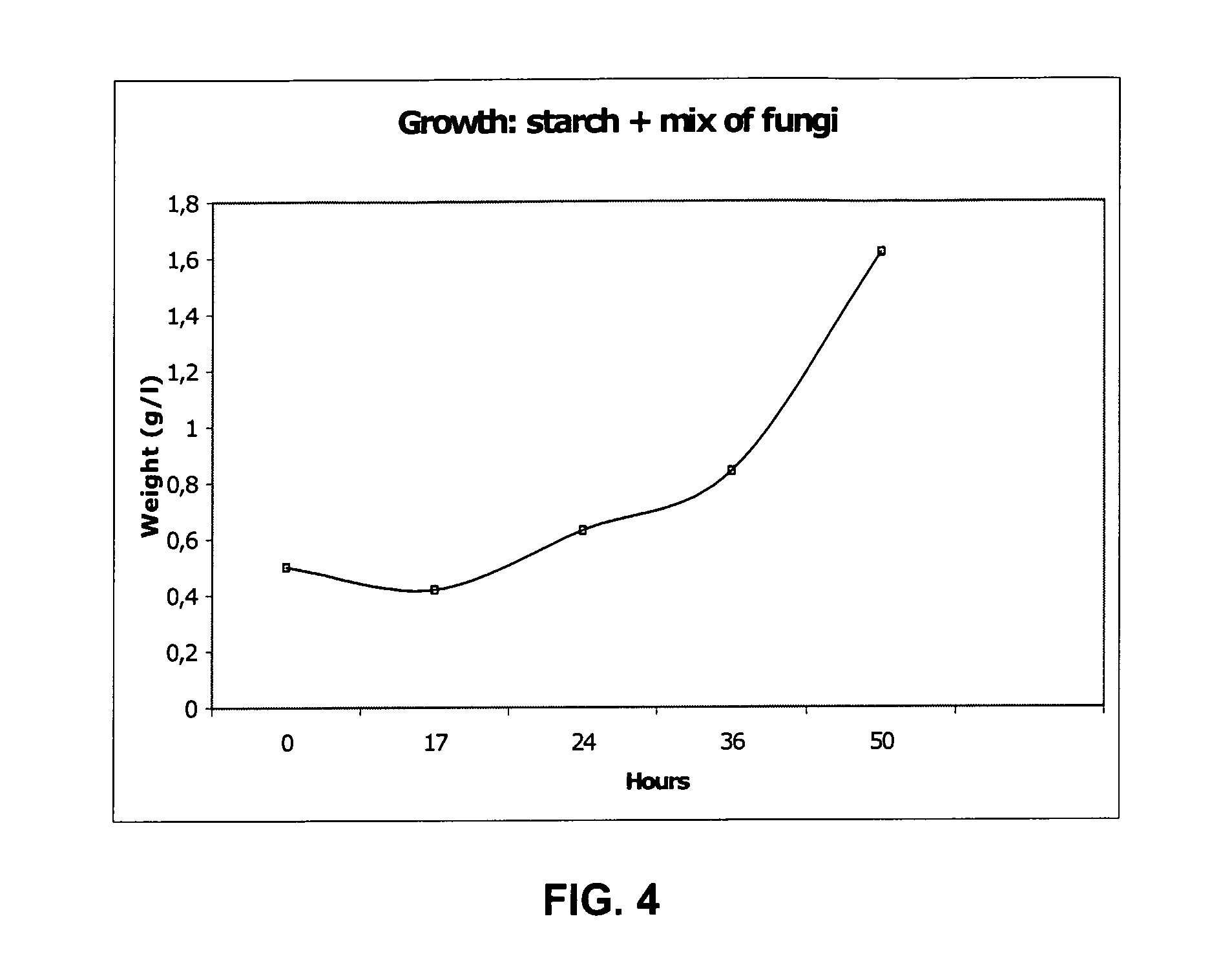Fermentation Process, Starter Culture and Growth Medium
a fermentation process and starter culture technology, applied in biofuels, microorganisms, fungi, etc., can solve the problems of less efficient genetically modified yeast strains described, and achieve the effects of reducing the cost of ethanol production, increasing the ethanol production of batch cultures from biomass, and high economic and environmental interes
- Summary
- Abstract
- Description
- Claims
- Application Information
AI Technical Summary
Benefits of technology
Problems solved by technology
Method used
Image
Examples
example 1
Growth of a Mixture of Fungi in Growth Medium Supplemented with Different Carbon Sources
[0061] In each experiment, fifteen 100 ml bottles were used. The cultures were inoculated with 0.05 g fresh weight (FW) fungi / l growth medium (see above) and grown at 27° C. for 50 to 65 h (se below) and were randomly weighed (wet weight), three bottles at four or five different points of time (in addition to time zero).
[0062] The growth of a mixture of fungi on different carbon sources was investigated by supplementing the medium with xylose 25 g / l, mannose 25 g / l, galactose 25 g / l and starch 25 g / l, respectively. The growth of a mixture of fungi in a newly designed hydrolysate was also investigated and the growth recorded as described above. The cultures supplemented with xylose were weighed 17, 24, 41, 48, and 65 h after inoculation. The cultures supplemented with mannose were weighed 14.5, 38.5, 45.5, 62.5, and 69.5 h after inoculation. The cultures supplemented with galactose were weighed ...
example 2
Ethanol Production in Wood Hydrolysate Using Different Amounts of Microorganisms
[0065] Ethanol production in wood hydrolysate was investigated using different amounts of yeast (S. cerevisiae) and a mixture of fungi (see Table 2).
[0066] The yeast S. cerevisiae and the mixture of fungi were grown separately in YEP- and SeHo-medium for 24 and 48 h, respectively. YEP is a medium based on YPD, a complex medium for routine growth, but is without dextrose and can be used as a base for making media with alternate carbon source. At the start of the ethanol production experiments, different amounts of the microorganisms (see Table 2) were introduced into 100 ml flasks containing a wood hydrolysate (pH set to 6.0). The flasks were argonised to obtain an anaerobic atmosphere and subsequently incubated at 27° C. for 113 h under agitation (150 rpm / h).
TABLE 2Amount of microorganisms used for production of ethanol inwood hydrolysateAmount of S. cerevisiaeAmount of mixture ofSample(g)fungi (g)10...
example 3
Ethanol Production from Lignocellulose in an Experimental Hydrolysate
[0069] In this experiment ethanol production in an experimental hydrolysate was investigated using S. cerevisiae and a mixture of fungi.
[0070] Three bottles with 100 ml of an experimental hydrolysate (See Table 3), containing S. cerevisiae and a mixture of fungi, was argonised to anaerobiosis. Samples of accumulated ethanol production was taken after 19, 43, 66, 91 and 137 h and analysed by gas chromatography.
TABLE 3Components of the experimental hydrolysateXylose 11 g / lMannose 27 g / lGlucose 9.7 g / lGalactose 4.7 g / lArabinose 0.69 g / lSalts0.040 g / lPhosphate buffer 1.75 g / lNH4Cl 0.5 g / lSterilized water up to 1 l
[0071] The results are shown in FIG. 7. A clear increase in ethanol production was observed, compared to the results shown in FIG. 6, i.e. about 17 g ethanol / l compared to 6.8 g ethanol / l. The increase is believed to be at least partially due to the fact that less inhibitory substances are present in the...
PUM
| Property | Measurement | Unit |
|---|---|---|
| pH | aaaaa | aaaaa |
| temperature | aaaaa | aaaaa |
| temperature | aaaaa | aaaaa |
Abstract
Description
Claims
Application Information
 Login to View More
Login to View More - R&D
- Intellectual Property
- Life Sciences
- Materials
- Tech Scout
- Unparalleled Data Quality
- Higher Quality Content
- 60% Fewer Hallucinations
Browse by: Latest US Patents, China's latest patents, Technical Efficacy Thesaurus, Application Domain, Technology Topic, Popular Technical Reports.
© 2025 PatSnap. All rights reserved.Legal|Privacy policy|Modern Slavery Act Transparency Statement|Sitemap|About US| Contact US: help@patsnap.com



